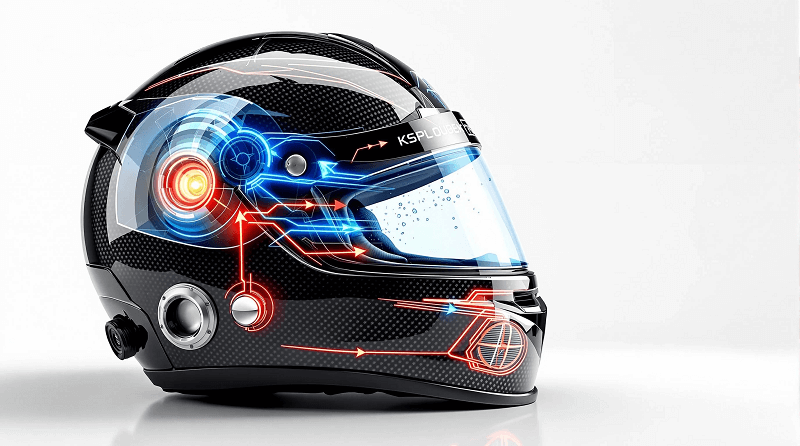Ever been halfway through a race, sweat pouring into your eyes, struggling to maintain focus as your helmet turns into a personal sauna? I certainly have! During my first competitive season, I learned the hard way that helmet ventilation isn’t just a luxury feature—it’s absolutely essential for performance on the track.
The Performance Connection
The relationship between helmet ventilation and racing performance is direct and significant. When your head overheats, your concentration falters, reaction times slow, and fatigue sets in faster. According to professional racers, even a momentary lapse in focus due to discomfort can cost precious seconds on the track.
Modern go-kart helmets like the Bell RS7-K feature advanced ventilation systems with up to 14 air intake and extraction channels specifically designed to maximize airflow during intense racing conditions. This isn’t just about comfort—it’s about maintaining peak cognitive performance throughout your race.
Types of Ventilation Systems
Today’s top helmets employ several ventilation approaches:
- Channeled systems: Internal pathways that direct air across your head
- Intake/exhaust configurations: Strategic placement of vents that create airflow patterns
- Adjustable vents: Allow customization based on weather conditions
- Forced air compatibility: Premium options for professional racers
The difference between basic vent holes and a comprehensive ventilation system is dramatic. Entry-level helmets might have simple openings, while professional models like the Arai SK-6 feature integrated ventilation networks that maintain consistent airflow regardless of head position.
Heat Management Science
Effective ventilation works by continuously removing heat and moisture from inside your helmet. This process is crucial because:
- Your head releases significant heat during physical exertion
- Trapped heat increases core temperature and accelerates fatigue
- Moisture buildup can fog visors and reduce visibility
Premium go-kart helmets incorporate ventilation technology that balances cooling with aerodynamic performance, ensuring you stay comfortable without sacrificing speed.
Common Ventilation Issues
Even the best ventilation systems can face challenges:
- Visor fogging: Particularly problematic in humid conditions
- Seasonal adjustments: Different racing conditions require different ventilation strategies
- Maintenance needs: Vent systems require regular cleaning to function properly
Many racers discover these issues the hard way. I once missed a podium finish because my poorly ventilated helmet caused such severe fogging that I couldn’t see the apex of a critical turn!
Choosing the Right Ventilation
When evaluating helmet ventilation, look for:
- Multiple intake and exhaust ports
- Adjustable vent controls
- Anti-fog technology integration
- Interior channeling systems
- Moisture-wicking liner materials
The Bell RS7-K and Arai SK-6 consistently rank among the best for ventilation performance, with comprehensive systems that maintain comfort during extended racing sessions.
Conclusion
After years of racing in everything from scorching summer heat to cool autumn mornings, I’ve learned that investing in a helmet with proper ventilation is one of the smartest decisions any go-kart enthusiast can make. The right ventilation system won’t just keep you comfortable—it’ll help maintain your focus, extend your stamina, and potentially shave precious seconds off your lap times.
Remember, the best helmet is one that you forget you’re wearing because it’s so comfortable! Take the time to research helmet ventilation systems before your next purchase, and your racing performance will thank you.

Goran, an experienced go-kart racer, fuels GoKartLife.com with his passion and expertise. He offers valuable insights and tips for fellow enthusiasts, fostering the growth of the go-kart community. Join Goran at GoKartLife.com and immerse yourself in this exhilarating sport.
Last modified: April 15, 2025



